#galaxy cluster
Explore tagged Tumblr posts
Text
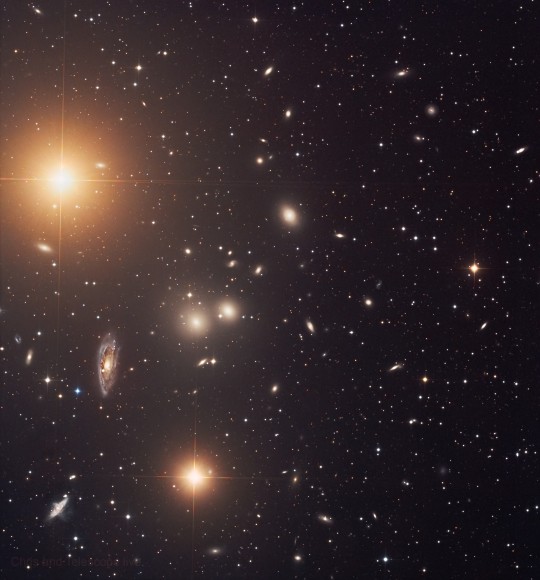
The Hydra Cluster, Abell 1060 // Chris DeCosta
#astronomy#astrophotography#galaxy cluster#hydra cluster#Abell 1060#galaxy#spiral galaxy#elliptical galaxy#NGC 3314#NGC 3312#NGC 3311#NGC 3309#NGC 3308#NGC 3307#hydra
176 notes
·
View notes
Text

Galactic Gathering © JWST
Galaxy Cluster SDSS J1226+2152: its immense mass distorts and magnifies the light from more distant galaxies behind it - a spectacular example of gravitational lensing
#galaxy cluster#nasa#webb#JWST#space#astrophotography#stars#night sky#galaxy#universe#planet#solar system#astronomy#cosmos#james webb space telescope
534 notes
·
View notes
Text

The Hydra Cluster of Galaxies - August 1st, 1996.
"You are flying through space and come to...the Hydra Cluster of galaxies. Listed as Abell 1060, the Hydra Cluster contains well over 100 bright galaxies. Clusters of galaxies are the largest gravitationally-bound objects in the Universe. All of the bright extended images in the above picture are galaxies in the Hydra Cluster, with the exception of unrelated diffraction crosses centered on bright stars. Several proximate clusters and galaxy groups might together create an even larger entity - a supercluster - but these clumps of matter are not falling toward each other. In fact, the Hydra Cluster is thought to be part of the Hydra-Centaurus Supercluster of galaxies. Similarly, our own Milky Way galaxy is part of the Local Group of galaxies, which is part of the Virgo Supercluster of galaxies."
#nasa#space#cosmos#universe#astronomy#astrophysics#astrophotography#hydra cluster#galaxy cluster#galaxies#stars
125 notes
·
View notes
Text
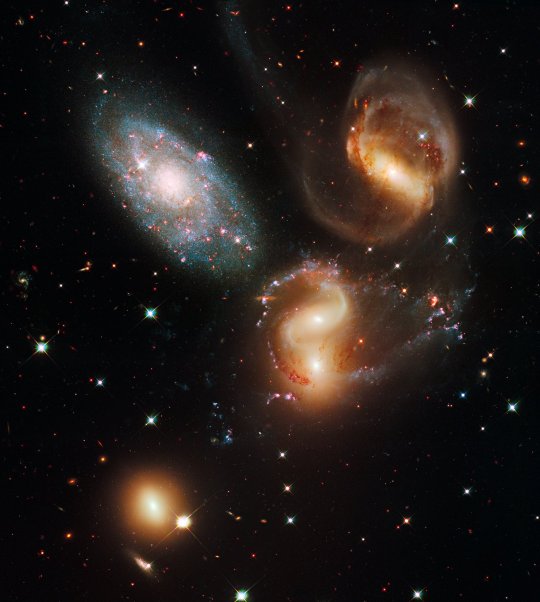
Galactic wreckage in Stephan's quintet
#astronomy#astro community#astrophotography#science#cosmos#photography#space#outer space#galaxies#galaxy cluster#nasa jpl#nasa photos#hubble space telescope
121 notes
·
View notes
Text
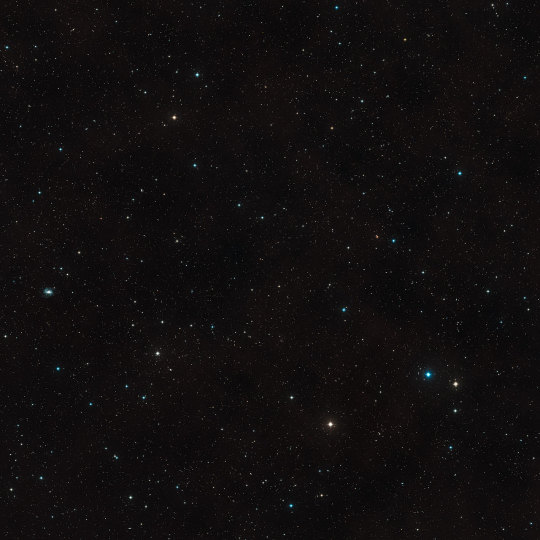
Hidden Cluster
348 notes
·
View notes
Text
The celestial object of the day is El Gordo!


This galaxy cluster is located 7 billion light-years away from Earth, and it formed when the universe was only half the age it is currently. Its ginormous mass (2.1 quadrillion solar masses) helps scientists see galaxies that are very far away thanks to gravitational lensing
#Image credit: NASA/ESA/SOAR/CSA#One of the telescopes that helped its discovery was Chandra#Thank Chandra!! Cool as always#astronomy facts#astronomy#astrophotography#outer space#space#nasa#nasa photos#science#space exploration#space photography#celestial object of the day#james webb space telescope#jwst#jwst images#esa#astrophysics#chandra x ray observatory#El Gordo#galaxy cluster
44 notes
·
View notes
Text

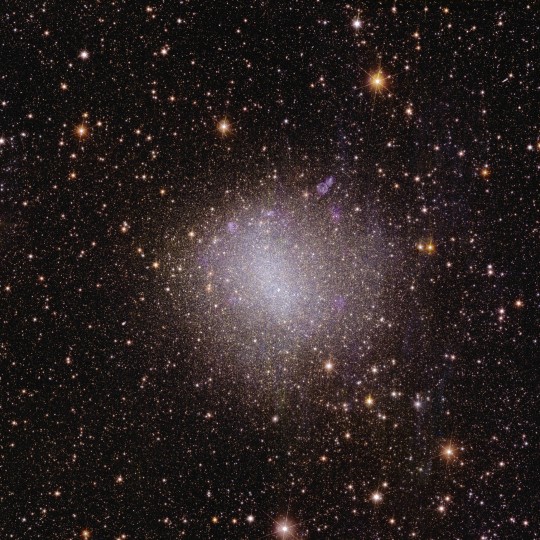

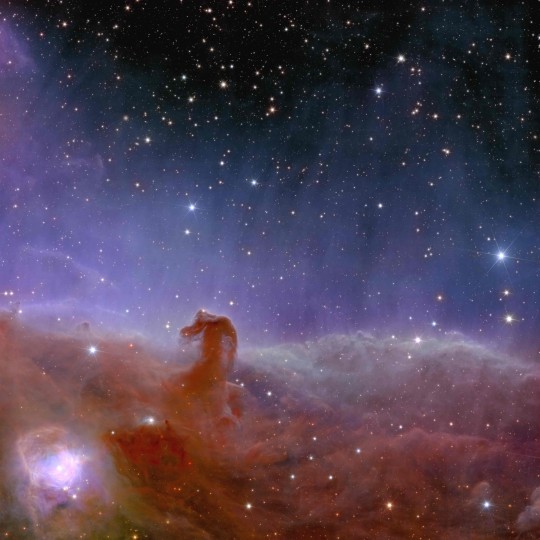
The first images from the ESA Euclid Telescope are here. It's impossible not to be fascinated about the universe.
#esa#euclid#telescope#euclid telescope#spiral galaxy#universe#stars#nebula#galaxy cluster#nasa#benimpost
124 notes
·
View notes
Text

I was having trouble with inspiration until at 1AM when I decided to just draw this dreamy landscape.
#art#artwork#digital art#digital artwork#galaxy art#anthropomorphic art#digital illustration#digital painting#digital drawing#anthromorphic#anthro art#anthro furry#red panda#red panda anthro#artists on tumblr#art on tumblr#illustration art#illustrator#illustrators on tumblr#landscapes#desert landscape#desert#dry lake bed#galaxy#galaxy cluster#nebula#stars#mountains#furry art#furry
7 notes
·
View notes
Text

Galaxy cluster ACO S 295
#outer space#space#source: nasa#galaxy cluster#space photography#hubble space telescope#nasa photos#daily image#im a sucker for space <3#science
8 notes
·
View notes
Text

The Great Barred Spiral Galaxy (NGC 1365, lower left) and the Fornax Cluster (Abell 373) // Aidan Beutel
#astronomy#astrophotography#galaxy cluster#fornax cluster#Abell 373#galaxy#spiral galaxy#barred spiral galaxy#elliptical galaxy#great barred spiral galaxy#NGC 1365#NGC 1316#fornax#eridanus
140 notes
·
View notes
Photo
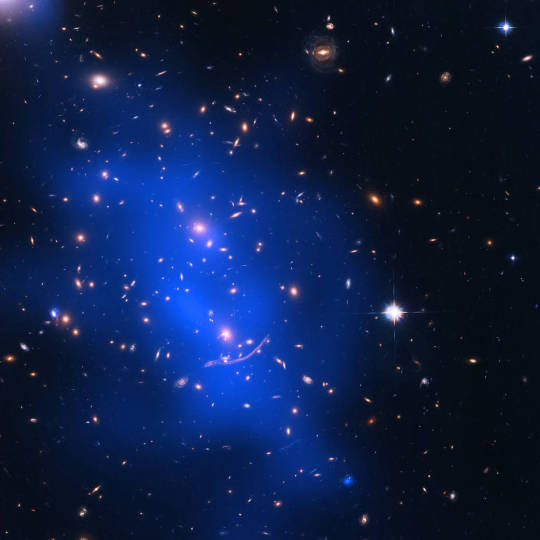
Galaxy Cluster Abell 370 © Chandra
#nebula#space#astrophotography#nasa#chandra observatory#galaxy cluster#universe#astronomy#stars#night sky#solar system#planet#galaxy#cosmos
1K notes
·
View notes
Text

Galaxy Cluster A2199 - January 22nd, 1997.
"It's bigger than a bread box. In fact, it's much bigger than all bread boxes put together. Abell 2199 is huge. It is a close, large cluster of galaxies, containing several thousands of galaxies centered around a central dominant galaxy. "Close," however, is only relative to other clusters of galaxies, since light takes about 50 million years to reach us from A2199. All of the fuzzy objects in the above picture are galaxies, but these galaxies do not contain most of the matter in the cluster. By studying clusters like A2199, astronomers conclude that some form of dark matter dominates the motion of the bright galaxies. What, exactly, this dark matter is poses one of the greatest astronomical puzzles of modern times."
21 notes
·
View notes
Text

Icyubahiro n'icyubahiro🪐🌌
By:
https://www.instagram.com/astro.lust?igsh=dG1nYXozZmRydWh5
instagram
#space aesthetic#astronomy#outer space#astro community#astroblr#astrophotography#galaxy#galaxy cluster#galaxies#nature aesthetic#spacecore#outer space aesthetic#deep space#Instagram
4 notes
·
View notes
Text
Stephan's Quintet

This galaxy cluster, appearing between 41 and 340 million light years away from us, was first discovered by the French astronomer E. M. Stephan in 1877. The galaxies are a mixture of spirals, barred spirals, and ellipticals. Some scientists think that the largest galaxy in this cluster, NGC 7320, is probably in front of what is really a quartet of interacting galaxies, and since then there have been many discussions between scientists with different theories on what this actually means.
#astro#space#astronomy#astrophysics#study space#solar system#space facts#galaxy#science#hubble#galaxy cluster
11 notes
·
View notes
Text
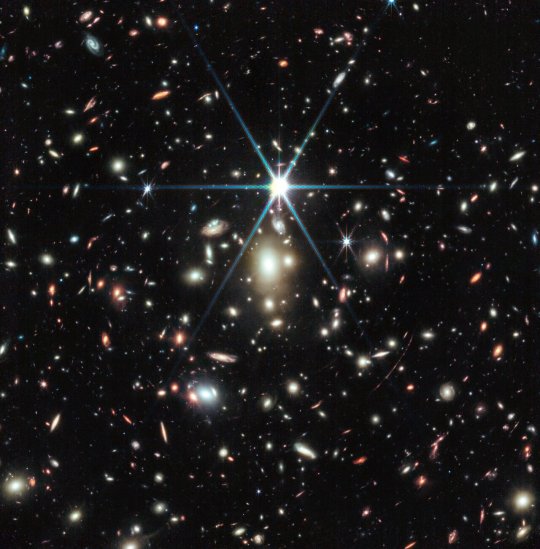
Sunrise Arc
104 notes
·
View notes
Text

#tried out astrophotography#space#milky way#astrophotography#night sky#galaxy cluster#stars#photography
3 notes
·
View notes